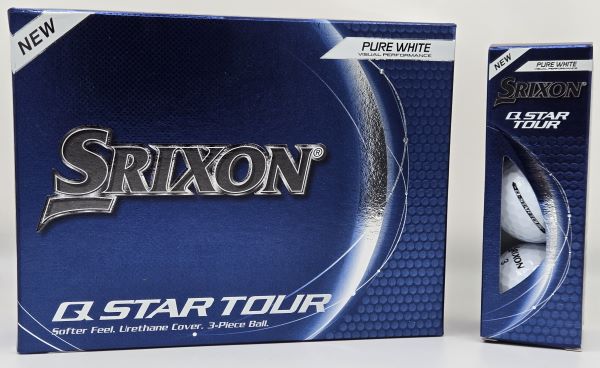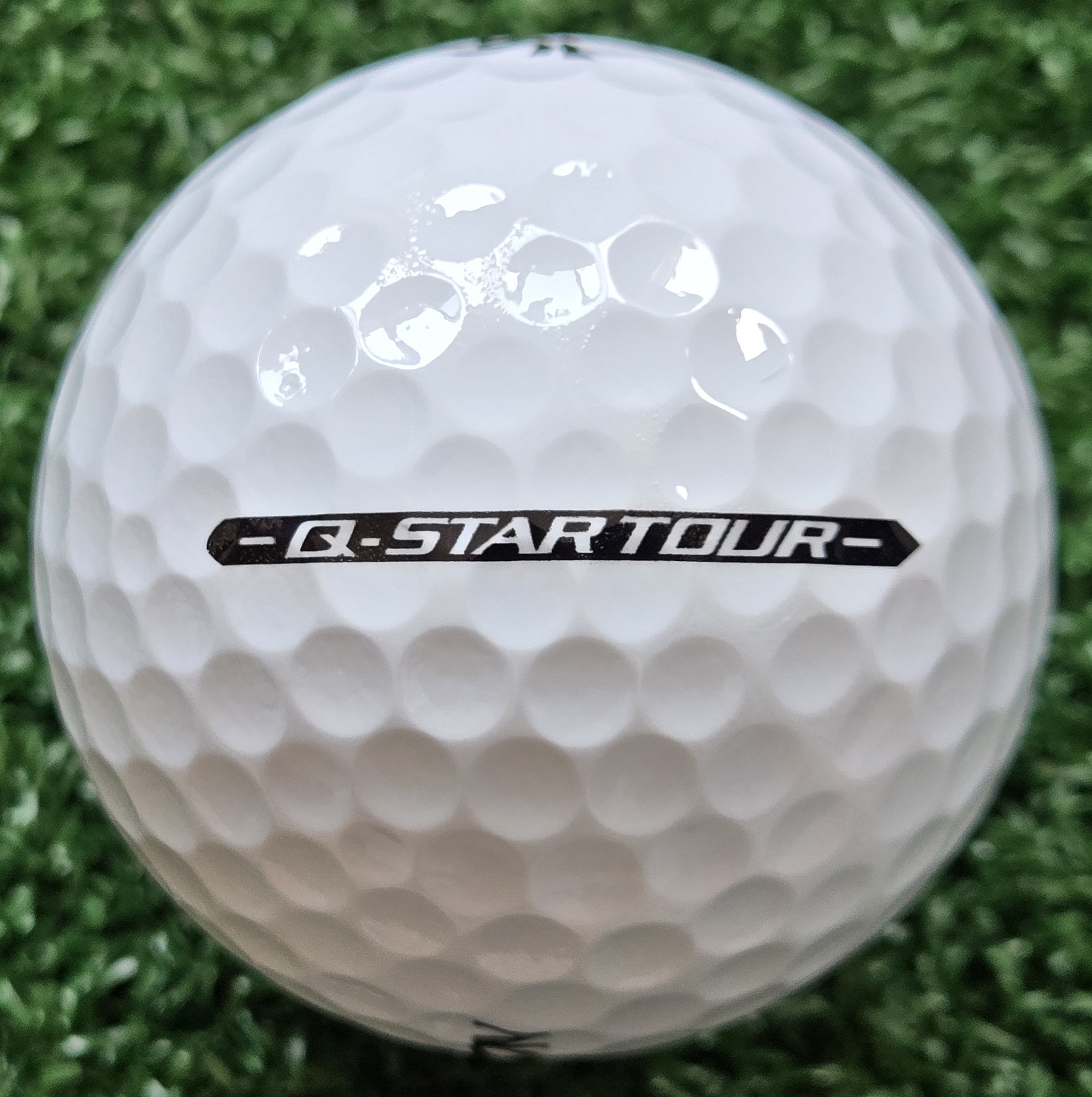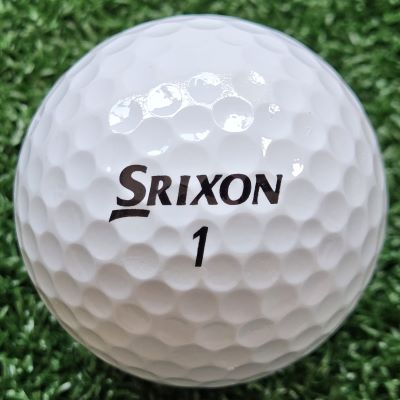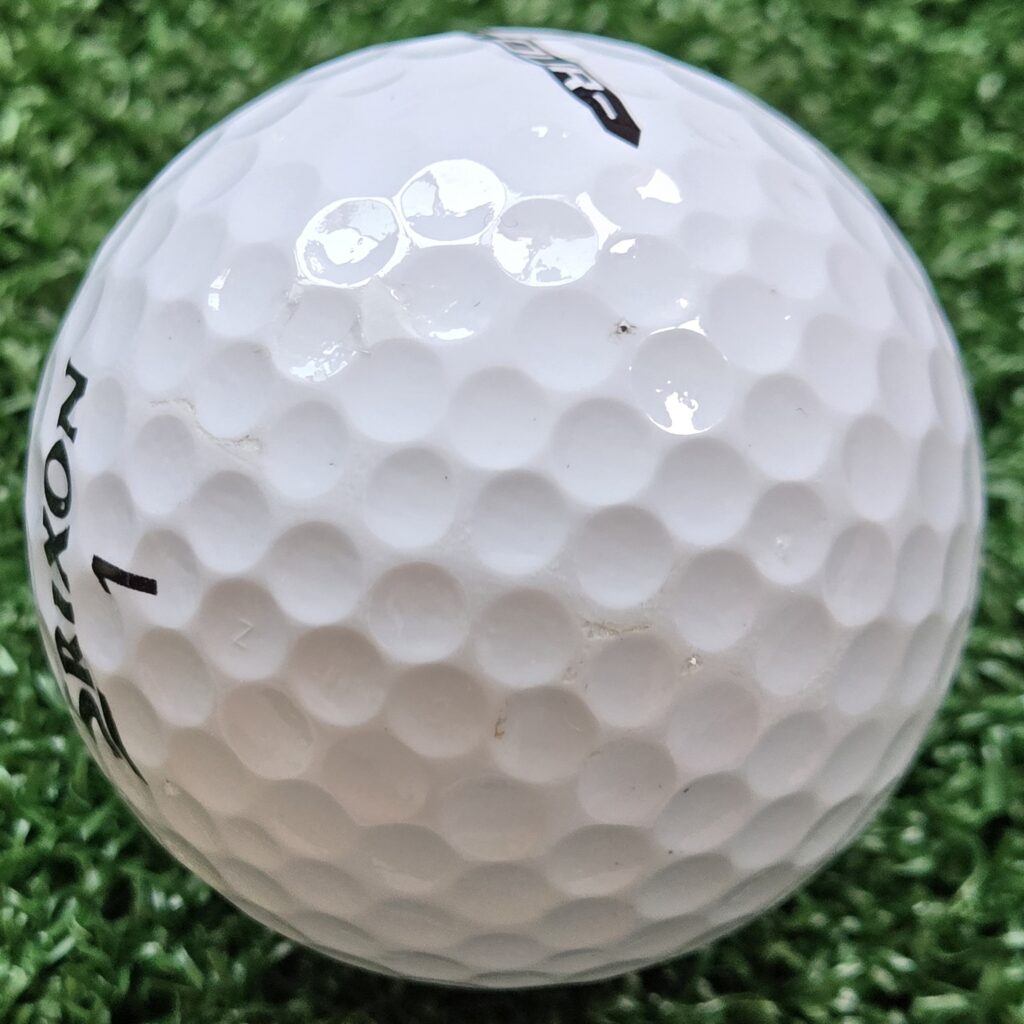This year Srixon released the fifth generation of its non-tour three-piece urethane cover ball. I am talking about the Srixon Q-Star Tour. It is supposed to provide you with a near-tour performance experience for a lower price. In the 2024 Srixon Q-Star Tour golf ball review I will let you know how close to a tour premium ball it comes.
The main difference compared to the previous model is the slightly harder compression rating, now at 74. This places it closer to the Titleist AVX and the Bridgestone B RX.
Also, there is a softer urethane cover that should add more approach shot spin and a satisfying, softer feel. To enhance spin, Srixon uses “Spin Skin” which is their proprietary golf ball coating.

Regarding aerodynamics, the 338 Speed Dimples help with less resistance for a more penetrating launch and straighter flight. Everything I read on the official website sounds great, but as usual, the experience will speak for itself. Let’s see how it went.
My Verdict
As soon as I hit it the first time, I remembered how much I enjoyed playing the previous version. At the end of the round, it was no different this time. This is a very solid golf ball that comes at a lower price compared to the tour-level balls. I have to give credit to Srixon, it does come really close to a tour ball performance.
On top of everything, it suits my game well because it has a similar compression rating to the Titleist AVX which is my ball of choice. The major difference is that this ball flies a bit higher on full shots. Nonetheless, it presents a very good value for money for anyone willing to give it a chance.
Who Is This Ball For?
To simplify it, this ball is for players looking for a close-to-tour performance ball for a cheaper price. Playing it you will not sacrifice much compared to the top-of-the-line balls. If anything, it will produce a bit less spin, but in the other areas, it is not going to be lagging much behind.
Higher handicappers might want to stay away from it, especially if struggling with hooks or slices. There is still enough spin to make your misses worse and negatively affect your dispersion. In case you are a skilled player, it will give you a fair amount of workability. So, mid and low-handicappers will most likely benefit the most from its performance. Also, if you have a fast swing speed, you might want to look at balls with higher compression ratings.
PROS
-
Distance
-
Price
-
Soft Feel
CONS
-
Not Suited for Fast Swing Speeds
2024 Srixon Q-Star Tour Golf Ball Review
Here’s a little transparency: This post contains affiliate links. If you click and make a purchase, I may receive a small commission. Don’t worry, there’s no extra cost to you. It’s a simple way you can support my mission to bring you quality content.
On the Green
Let’s start from the feel. Despite the slight increase in the compression rating compared to the old model, it still produces a mellow sound and a soft feel of the putter face. I had no issues with adjusting to the pace since it is a slightly softer ball than the Titleist AVX that I currently play.
On long putts, for the most, it was finishing within the 3-4 foot range from the hole and it was holding the line just fine. I did not notice any unusual behavior on shorter firmer putts or any putts that were bending on their trajectory. Putting with it was just fine.
Around the Green
Again, because of the similarity to the ball I play, I had a familiar experience with chipping. Similar to the previous model, the ball produced a decent amount of greenside spin. That is good because I was able to plan for shots without making any adjustments to the chips.
It was feeling soft when hit on shorter and longer chip shots. Everything from bump-and-runs to softer, and higher-trajectory chips looked fine. Because of enough greenside spin, distance control is easier compared to the two-piece lower-spinning balls. However, it still produces a bit less spin compared to the more spinning top-of-the-line balls like the Titleist Pro V1 or the Callaway Chrome Tour.
Approach Shots
Ok, let’s start from the feel again. It felt soft upon contact which made hitting it a nice experience. Its combination of mid to high-flight trajectory and a decent amount of spin made it stop fairly quickly on the green. That helped with distance control which was consistent through the round.
Even when I hit some shots on a lower trajectory there was enough spin to stop the ball after a few hops. It was reaching good distances and producing a straighter flight. The straighter flight helped with the dispersion making the misses manageable.



Durability
The new Q-Star Tour has exhibited a solid level of durability. While there are a few visible marks and scuffs on the ball, nothing concerning would be worth noting. I am sure the ball can go multiple rounds without any drop in performance. For that matter, durability slightly improved compared to the previous model. That is after a full round on a par 3 course which is a good test for durability since the ball is hit only with irons and wedges.
Appearance and Price
Not much has changed when it comes to its appearance. There was only one subtle change related to the alignment. Now instead of two small dots on each end of the arrow, there are two short lines. The alignment is very helpful if you use it to align your ball when putting like I do. It is available in pure white and tour yellow colors. Additionally, you can purchase the Q-Star Tour Divide balls in the yellow/orange, yellow/red, and yellow/blue combinations.
When it comes to the price it is not the cheapest ball in the non-tour premium balls category but not the most expensive one either. It comes at 39.99 USD. Overall, it provides a good value for money if you don’t want to spend top dollar on a dozen balls.


Thanks for review .
Couple questions :
1) which goes ball further off the tee as higher compression AVX should go further and robot testing seems to show Q star tour is short ?
2) which goes further off irons and how much we talking ?
3) due to Q star tour higher flight even in chip shots could be useful for control despite lower spin vs AVX coming in lower with low spin ?
Appreciate any feedback
Hi Toby,
Thank you for your thoughtful questions! I’ll address them based on my experience and knowledge.
1. Driver Distance
I haven’t personally tested the Q-Star Tour with my driver, but reviews and testing data suggest that the AVX may have a slight edge in distance due to its low spin and penetrating flight. Launch monitor testing shows they’re not far apart, but in real-world play, factors like driver setup, swing speed, and weather conditions (e.g., wind) can amplify differences. In windy conditions, the AVX often performs better because of its lower flight.
2. Iron Distance
With wedges and short irons, there’s minimal difference in distance. The AVX produces more backspin (for example, around 7800 RPM vs around 6600 RPM on 50-yard shots based on launch monitor testing from industry experts), helping it stop faster on greens, while the Q-Star Tour’s higher flight also aids control. For mid-to-long irons, the AVX tends to go a few yards farther, especially if your clubs have stronger lofts (game-improvement irons). The difference is likely within 1-2 yards for most players.
3. Chip Shots and Stopping Power
You’re absolutely right: the Q-Star Tour’s higher flight can make it easier to control chips with a softer landing. However, the AVX surprised me with its stopping power and distance control around the greens. While trajectory plays a role, your chipping technique and skill level will ultimately determine how effective each ball is for you.
My Perspective
I play on park-style courses with trees and often test balls on par 3 courses. The AVX suits my game because its low flight helps me navigate obstacles and windy conditions. On the other hand, the Q-Star Tour is a great choice for golfers seeking a balance of performance and price. Both balls are excellent. The key is matching one to your playing style, course conditions, and personal preferences.
I hope this helps! Let me know if you have further questions.
Kind regards,
Dan